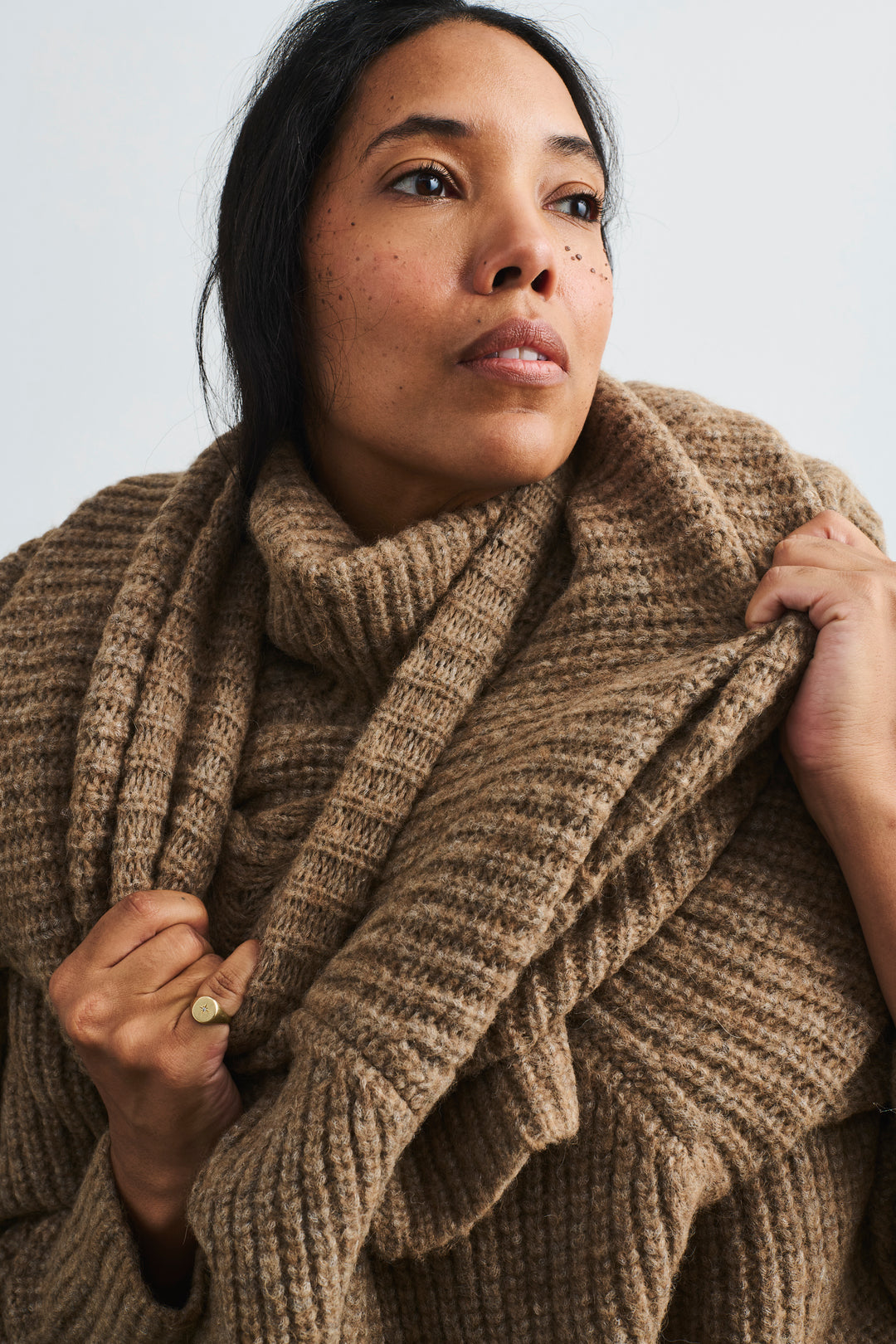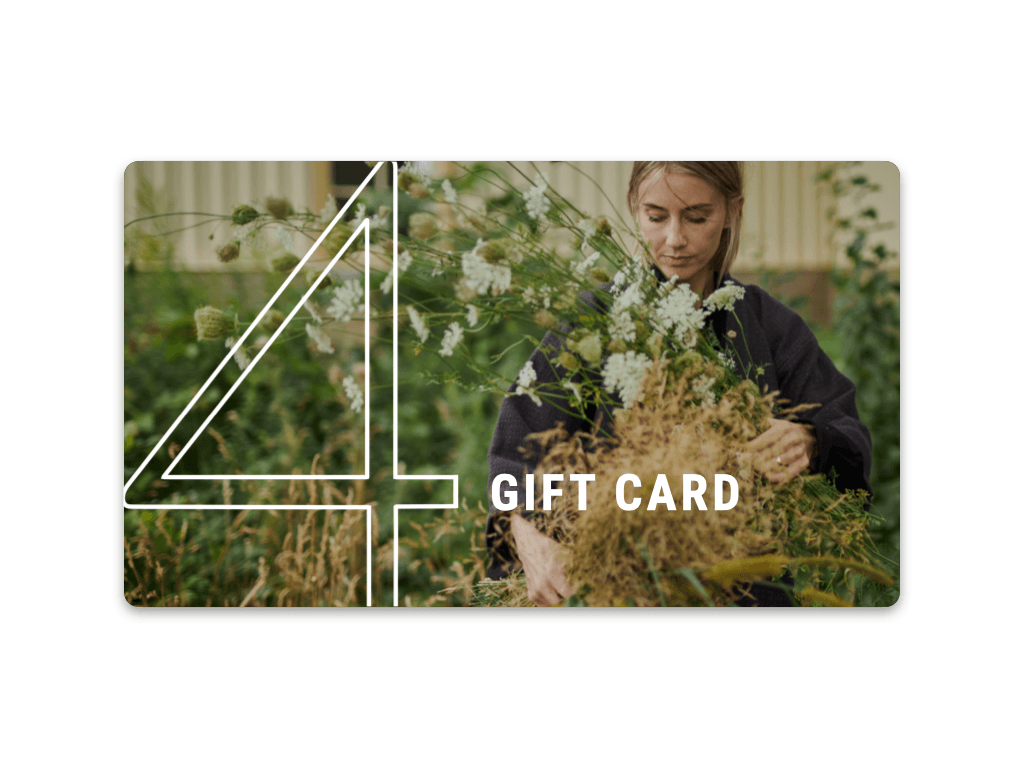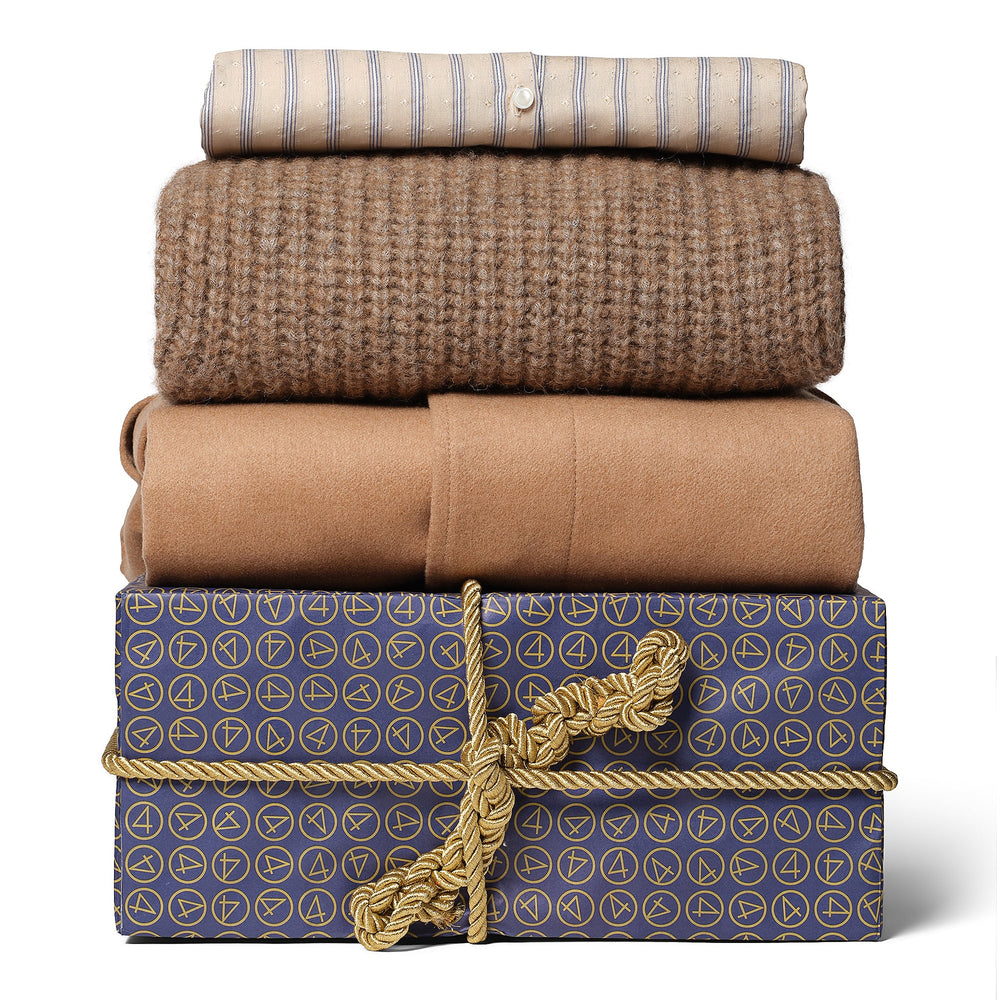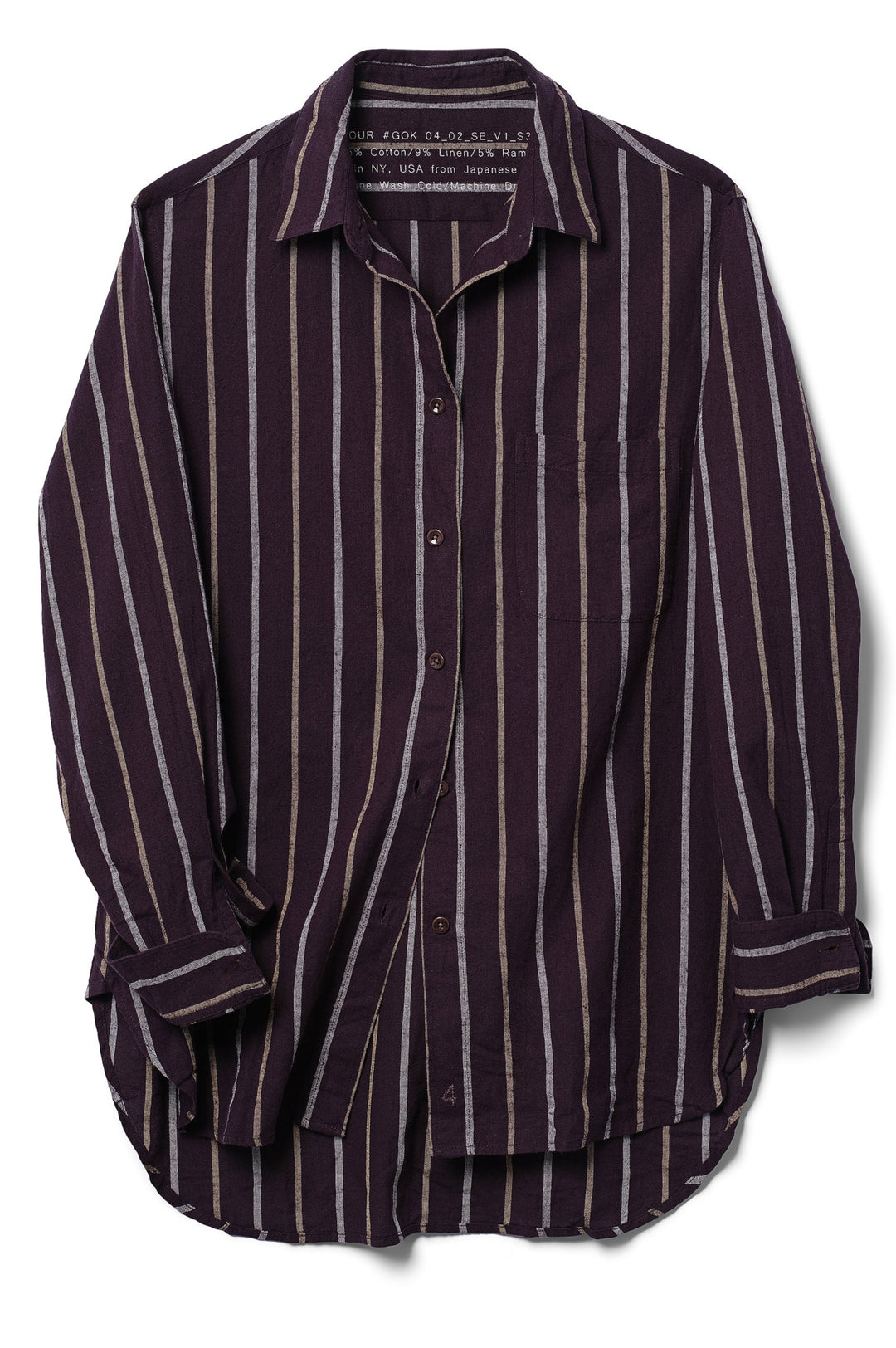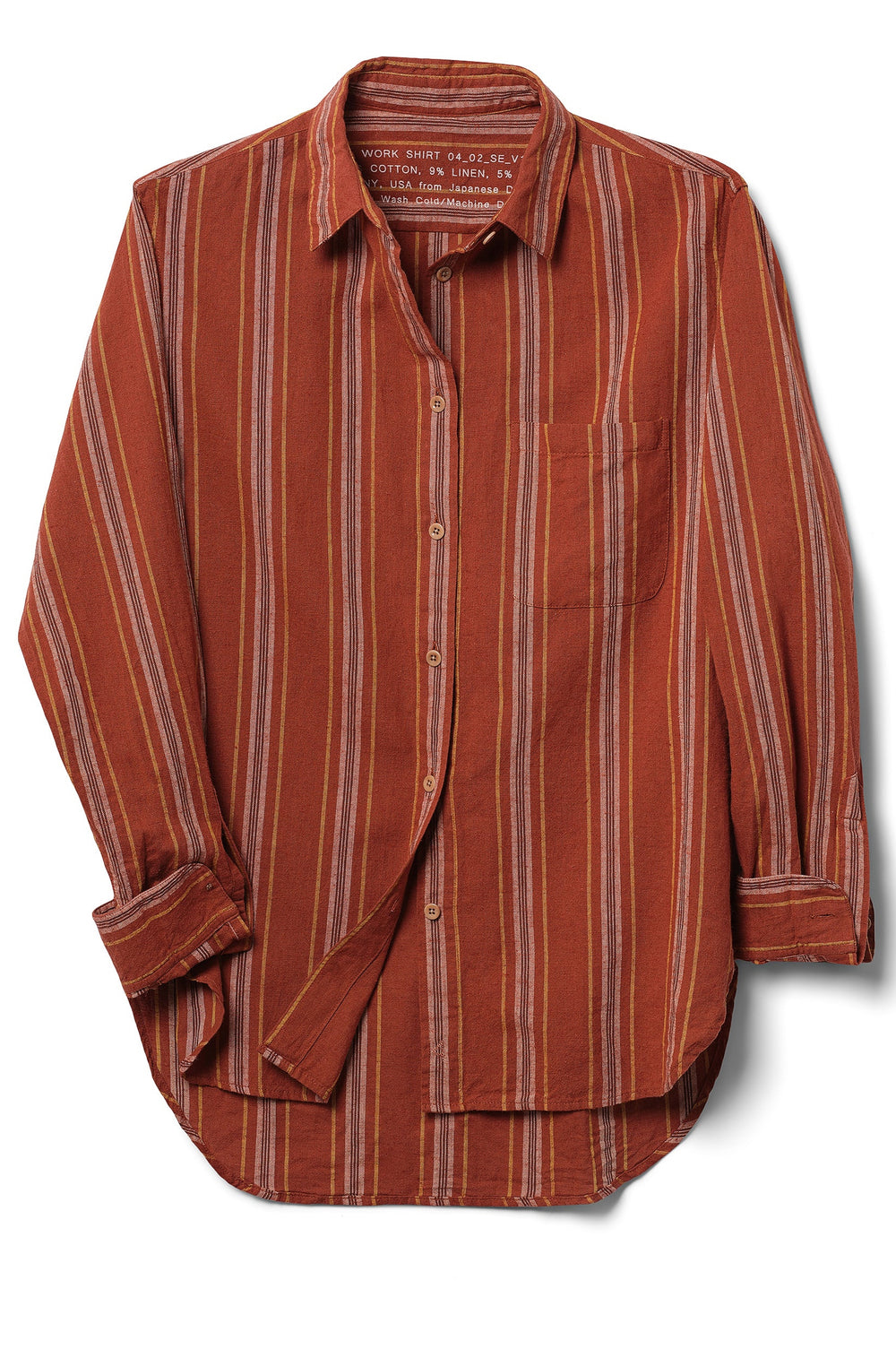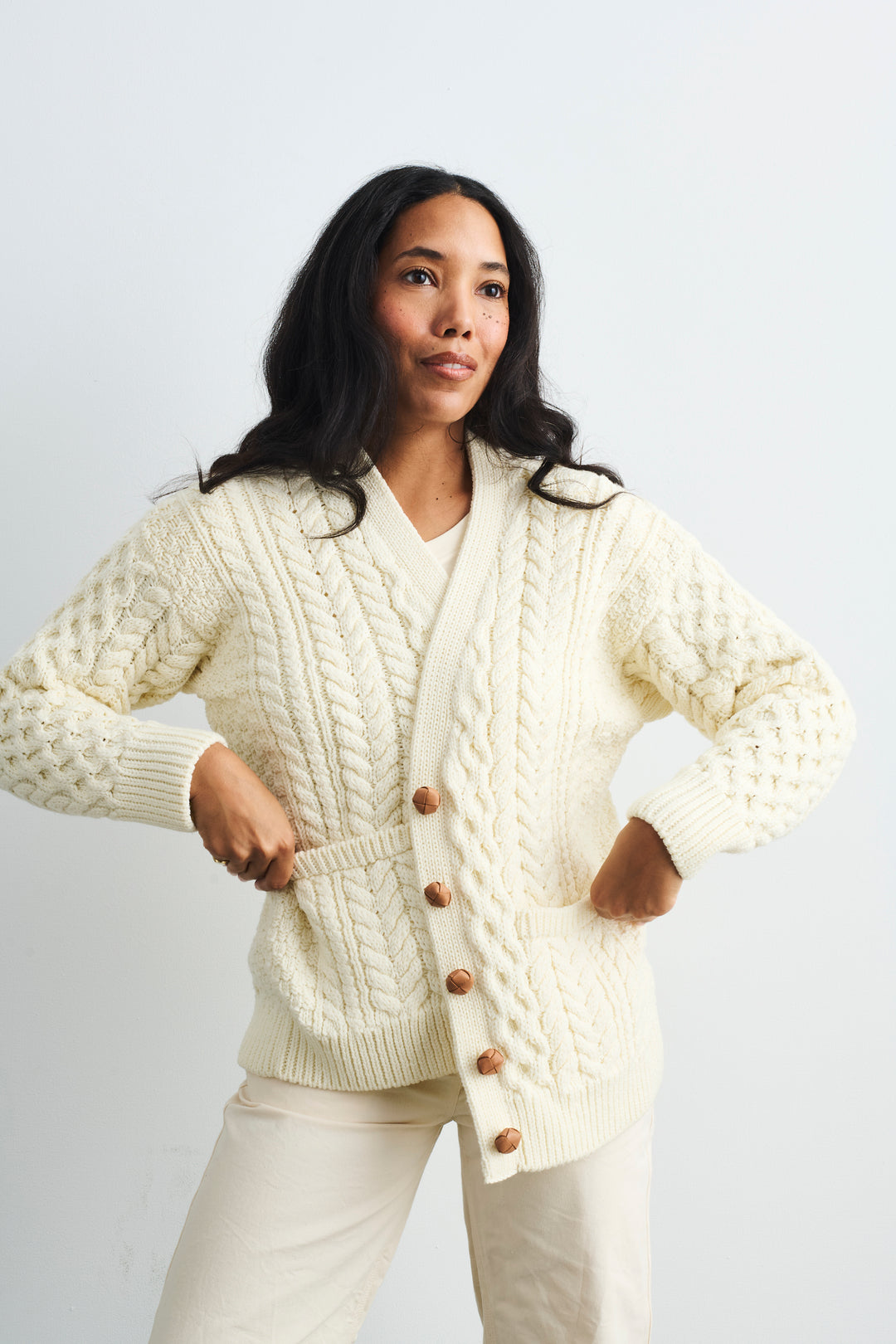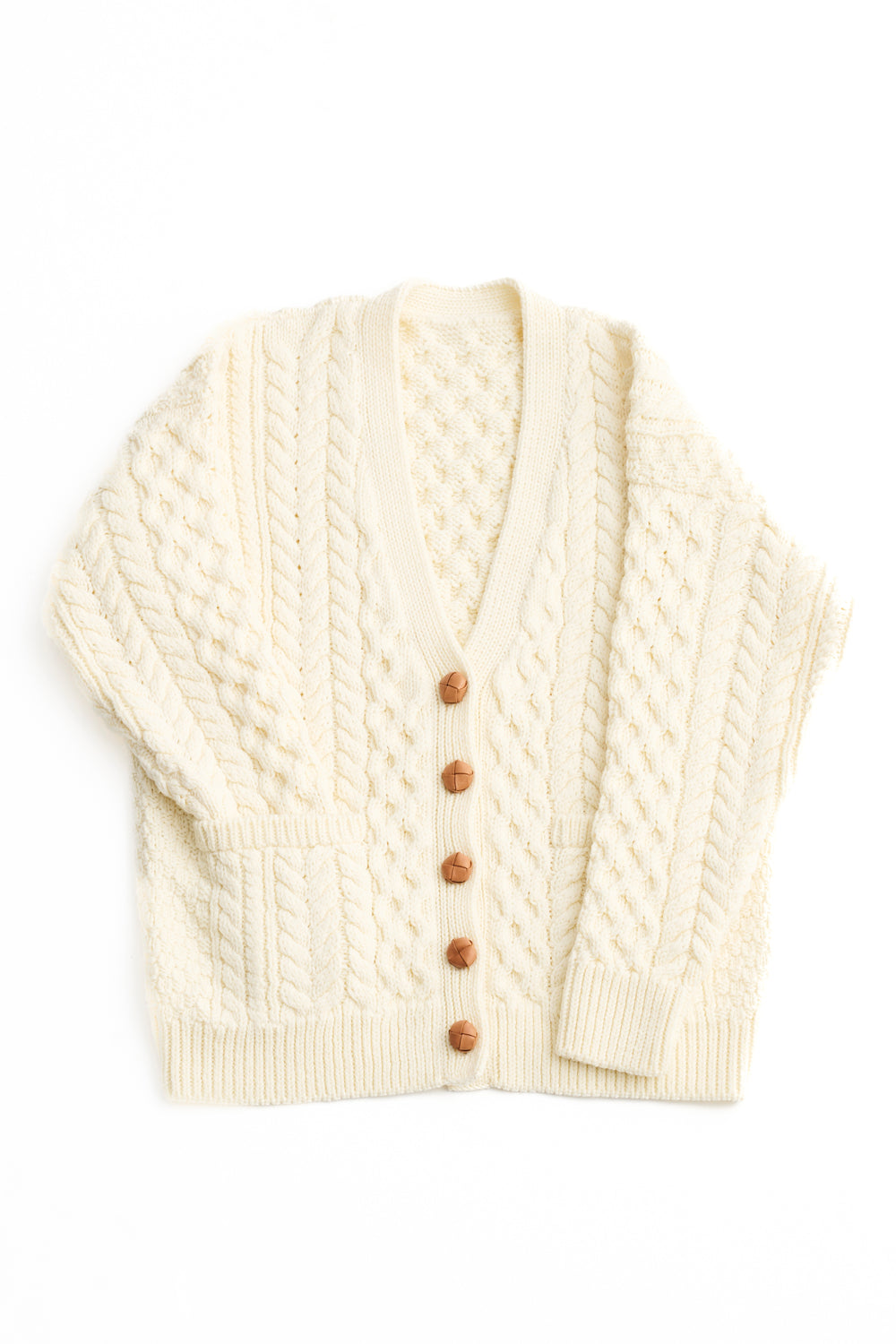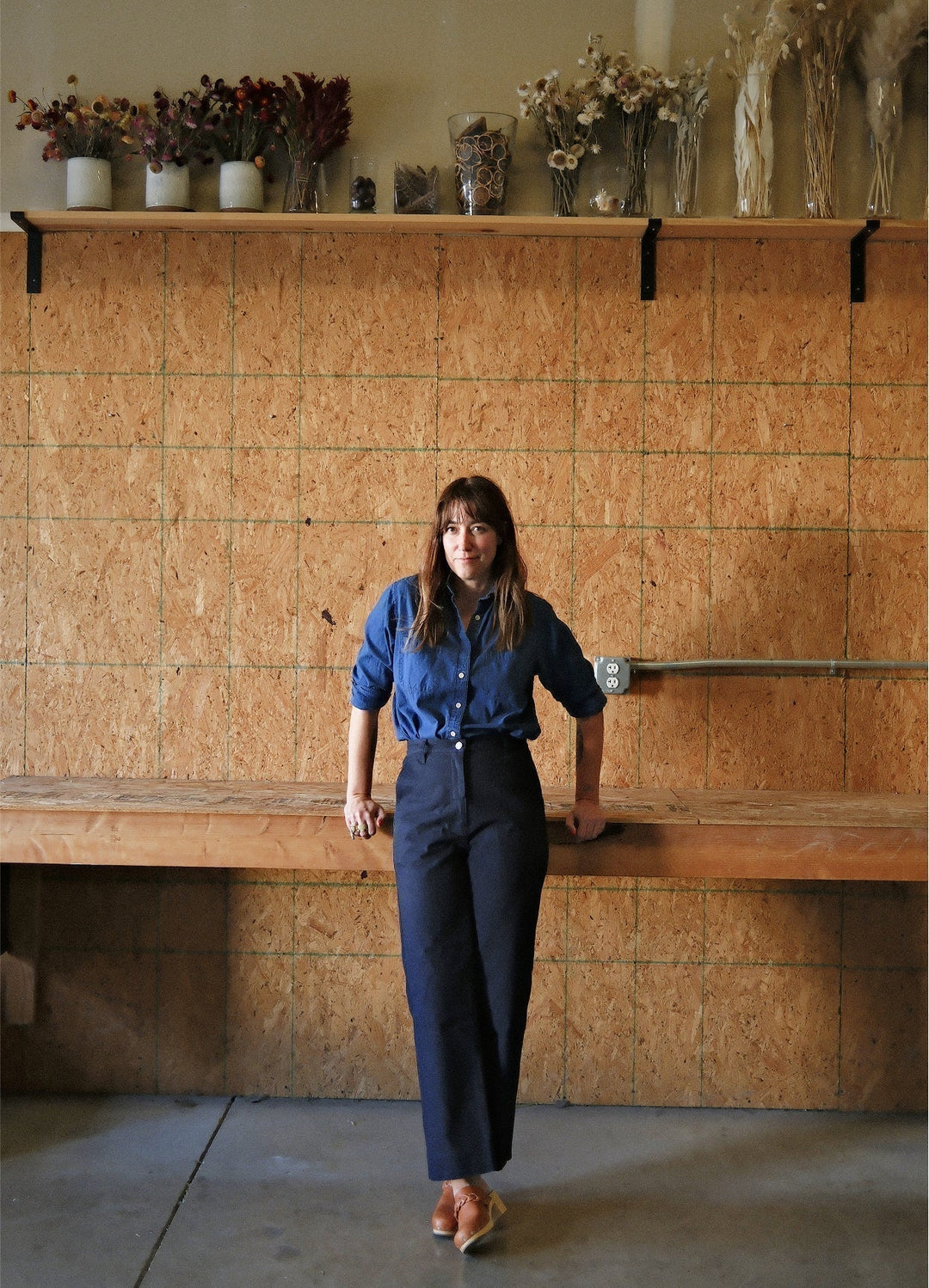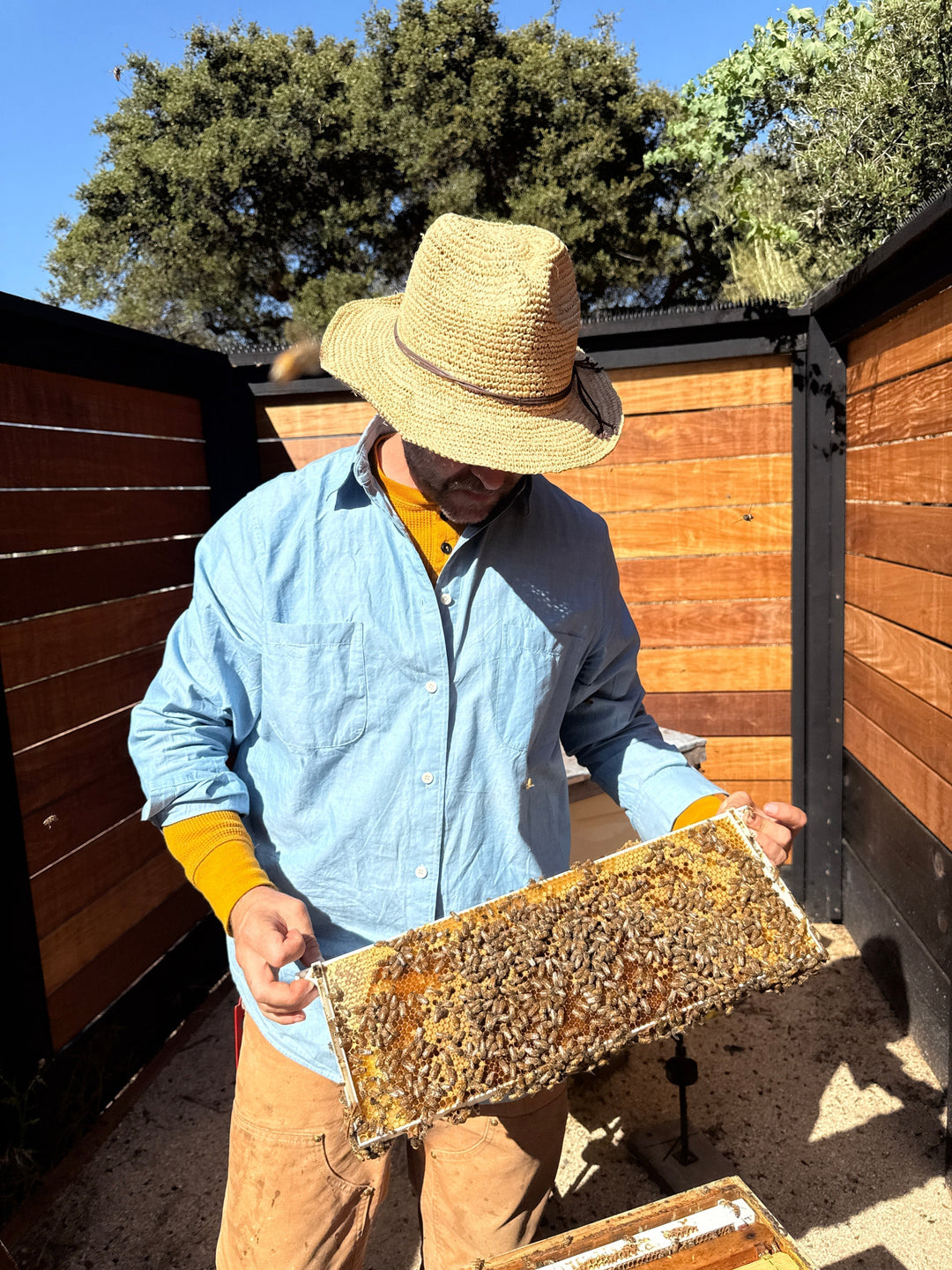Story of the BFT is the story of FOUR OBJECTS
Ku and Mae met at Parson's School of Design in 1994 as teens bunking together for the summer program. Ku studied Fine Art and Mae studied Fashion, each rounding out their college application portfolios. The thread of their friendship winds through Brooklyn, India and Europe. Through all the twists and turns, one thing has remained constant: a creative dialogue and symbiosis that spans decades.

Ku found work as a designer in both high fashion and mass brands. As she traveled the globe, she found that the best product was created by people with passion for their craft, whether they worked in the bustling, jammed factories of Guangzhou or the serene, family-owned studios in Veneto. In every factory, in every country, many of these passionate makers were women. They worked not just to support their families but also to nourish their creative spirits. In the best factories, these women had power, their voices were heard, and they knit together communities that supported healthy families.
Mae got her BFA from Parsons and BA from the New School, made art and traveled the world in search of rich cultural experiences from years studying art in Italy, months hitchhicking around Turkey, to crossing Spain on foot to half a year in India. While exhibiting art across the US, Mae went on to get her MFA from Bard College and ran a yoga retreat center on the banks of the Navesink River. While art and culture is her passion she earned a living as a fashion concept designer for brands in the US and Japan.
In 2017, after years of working together on various freelance projcects, Mae & Ku decided to come together on a minimalist capsule collection, combining their design talents and desire for ethical & sustainable practices into developing a distinct collection of functional garments that, once finished, would become an artwork in and of itself.
Ku still works in fashion. She designs high-quality clothing for families every day, and spends her nights and weekends working with Mae on FOUR OBJECTS (after the kids have gone to sleep, of course). FOUR OBJECTS allows them both to apply the lessons they’ve learned from their travels: to experiment with compassionate ways of doing business that support women and families, while producing the timeless garments they love and wear every day.
Below is the unedited interview conducted by Sheridan Wilbur for Honeysuckle Magazine.
What inspired you to start FOUR? Did you have any fears when launching?
KU: FOUR was borne out of frustration and constraints. After decades in the fashion apparel business we were tired of being told "you can't" and "it doesn't work that way.” We knew how much it takes to start a brand, not just the time it takes, and the failure you have to withstand, but simply the money you have to have to get started and produce inventory. We decided that FOUR OBJECTS would be an experiment. We wrote down things we wanted to try to prove: you can be a working mom, not rich, and still start a successful business. You can speak to women with intelligence and respect. Women want function and longevity from their clothing (you don't have to drive the engine of “new, new, new” to be successful). You can be a company that treats its employees, manufacturers and consumers all as one community.
MAE: I’ll add that starting a business you know won’t be scalable and promising 4% of your profits back when you know you’ll be on a rolling production model is a level of risk I could not have withstood if Ku wasn’t the mastermind behind our operation.
What have you learned from starting a business? Perhaps about yourself, ethical production or business?
MAE: Ethical production has always been at the forefront of our efforts, FOUR OBJECTS is all about our relationships with people whether it’s our vendors or our customers. But almost immediately after releasing the Rabbit Jacket I realized that we needed to pay a lot more attention to our fabric from farm to mill. I decided to update my knowledge and enrolled in FIT’s Sustainable Design Program where I met incredible change makers while learning more about where the fashion industry is and what steps we can take to push it closer to where it needs to be. Our most recent development has been a partnership with Shelly Gottschamer, an incredible industry leader in Sustainability who has been assisting us in achieving the widest impact with our collection.
What makes FOUR OBJECTS stand out from other ethical fashion and collection brands?
MAE: We only look at our competitors when we design a new piece because if someone is already doing it right, then we’d rather send people there. Showcasing ethical & sustainable brands is a favorite aspect of our work. I believe there’s enough love to go around. FOUR OBJECTS doesn't really have any direct competitors because we are making a single collection of clothes. While we’re happy to sell pieces a la carte, we’re really excited about our Collectors. Women who get what we're doing and love the idea of a single Collection of clothes to love, repair and pass down. 16 pieces, released 4 per year. As soon as they’re released we send them to our Collectors. If they love it they keep it, if not they send it back and wait for the next piece. We have three years left to complete the collection and then we'll see. We might continue to add a summer or winter fabric weight like the Best Buttondown shirts, but we won’t be adding styles. We hope to continue making everything as long as they're in demand. We are committed to producing what we make on a rolling basis in small batches. We do this so that we can consistently improve our supply chain as sustainability options improve, make any product updates based on Collector feedback and add additional sizes according to demand. We want to make clothes for every woman who wants it, so we keep a waitlist according to size. We are currently fit testing sizes 26-28 and plan to continue adding sizes with every production run, it's very exciting.
What is your favorite FOUR piece?
MAE: Truthfully, I think I have worn my Work Shirt chambray shirt 5 out of the last 7 days. It's just absurdly comfortable all summer long. As soon as the temperature drops below 70 degrees, I’ll be throwing my Rabbit Jacket over everything; in the house, out of the house, it’s my go to.
KU: That depends on the day! I wear all of the first four all the time...the BFT (our final prototype) and linen and chambray Work Shirt are on my weekly rotation right now but once things cool down I'll be getting back into the Rabbit Jacket, the Foundation Sweater and the Work Shrit in wool...
What is your creative process?
KU: We took the concept of "16 things you want to keep and wear forever" very seriously. We talked about everything we have or want to have or had at one time that was a favorite coveted thing. We debated what would have more longevity and versatility to get down to the 16 final pieces, and ultimately where our different styles cross over and find common ground. We've sketched out the whole collection and now we are executing piece by piece. We may decide to change our minds on a few things as we go, but it's been pretty wonderful. One of the most important parts of executing, and I would consider part of our creative process, are our fit parties. Once we are happy with a product prototype, we make the full range of sizes and have a party with as many women of as many different shapes and sizes as we can. Each fit party has been so enlightening and lots of fun, meaningfully impacting everything we make. What I love is that we've managed to get the fit right so many women can actually wear multiple sizes and look and feel great, it's just about how they want to style the item. When you can wear a size bigger or a size smaller and still look great, just different, tells me that we nailed that fit.
Describe a typical day on the job:
MAE: I don't remember the last time a day felt 'typical'. During the pandemic everything has been in flux, framed by the needs of our young children. We both have two children and work-from-home partners so we're all splitting the day and trying to get ten hours of work done in half the time. We have a continuous production model, so there are a lot of hats to wear between the two of us.
How has FOUR adjusted to the pandemic?
KU: Things slowed down and speeded up at the same time. All of our suppliers stopped production or closed, and of course we were managing our work and families and had to change our pace of everything. Simultaneously, we had just signed on to launch advertising on Instagram which was a big step for us financially, so we were really worried. We felt strongly that our message of buying fewer, better things was even more important than ever and so we decided to move forward. The response to our small test of initial outreach on IG immediately resonated and all of a sudden orders were flooding in! We had to figure out how to make more garments immediately and yet couldn't. We're still catching up with orders, and are grateful that our new customers are being patient and embracing our "slow" pace…
How has fashion impacted you personally?
MAE: I spent many years as a Concept Designer, which is basically an in house forecaster. I did years of fashion research on what was being produced both in the present and in the past. I worked for a lot of heritage brands, so synthesizing historical research and market trends into viable products for different clients was part of my brief. Simultaneously, I maintained a folder named “Me?” where I would collect everything I loved both from an aspirational vantage point and a practical one. I stopped adding to it about six years ago because I finally reviewed it and realized that I saved the same types of garments over and over, season after season. It was a huge moment for me personally to realize that something might seem necessary or relevant in a moment, but ultimately I was attracted to the same silhouettes and styles time and again over the course of two decades. I brought it out when Ku and I were sketching out the 16 pieces. We’re very different, so it was fun and inspiring to see where we aligned and what we couldn’t find elsewhere and what we simply HAD to make.
What steps can shoppers take to shop mindfully?
KU: The most important thing is to purchase and wear clothes that you really love. It may sound strange but purchasing clothing that doesn't last and then throwing it away is the worst contributing factor to both people and planet, because the energy put into that item is essentially wasted (not to mention landfills). If you do anything, just use your clothes for longer and purchase ones you can get the most use out of. Give yourself permission to spend a bit more because you buy less. You'll find your total annual spending doesn't increase, you just end up with nicer stuff! Beyond that, you want to look for natural fibers that will biodegrade, and recycled and organic content wherever possible. There is still a long way to go, but recycled and organic fibers have become much more commonplace and brands are beginning to look at them as fundamental, it will be noticed when you choose to purchase that item in place of a conventionally produced garment.
MAE: The only thing I would add to that is to repair your clothing, and when you are finished wearing things, sell, swap and donate! Do everything you can to keep your textiles out of the landfill. In NYC we are very fortunate to have municipal textile recycling and Fabscrap. An internet search will reveal that there are many companies out there making a lot of interesting products from used textiles. And anything polyester can be recycled and made again and again. There is no need for virgin poly content, there’s enough out there for the next millennia.
What is your hope for the impact your clothing will have on other people and the planet?
MAE: The entire industry has to systematically change and start taking responsibility for what it makes from cradle to cradle. I believe this across ALL industries, btw. Personally, I think every business should be paying a carbon tax to offset the environmental cost of doing business and that the tax structure should be re-written to incentive responsibility for the future and penalize damage done. I would hope that nothing gets made that can't be recycled or composted. That we ban the use of virgin and single use plastic. We should be revolutionizing our waste streams to recycle what's already out there ad infinitum. In the fashion industry we should be producing fabrics that can be recycled, all patterns should be engineered to get as close to zero waste as possible, scraps from production should be collected for recycling, dead stock should be sent to design schools and sold for home makers, etc. Further, I would hope that nothing is produced that isn't certified Fair Trade. It is unconscionable that men, women and children are making our clothing and can't afford proper housing, food, education or healthcare. We have to ask ourselves why we’re willing to put it on in the first place. I would also hope that products that make use of animals be certified for the five freedoms. I could go on... but worldwide governments and producers are only two variables in this equation, as consumers we need to acknowledge our role and accept the fact that every dollar we spend is a vote for or against the future. The global economic, social and climate crisis is not a future problem, it is up to all of us to modify our behaviors right now. Survival on this planet is not a sure thing.
Specifically for the FOUR OBJECTS collector, I hope we offer another opportunity to see that their choices really matter. We think fewer, better things are the future. We don't want people to buy and not wear, we only want women to love what they keep. We have a generous return policy of six months because we want our customers to really get the collection into their daily wardrobes. And if it doesn't work, we'll take it back. Once we have enough returns we’ll launch 4WORN as a secondary market and a Collector repair service. And when the garment is over, we'll take it back and recycle it. We aim to be as circular as possible.
What do you see for the future of fashion?
Ku: In the short term, we are going to see a huge change in the landscape of fashion companies, there will be more bankruptcies, more consolidation, and more new brands coming up. Many of the traditional rules and structures will be ignored while brands start making their own rules, and e-com will be king, but will also depend on meaningful IRL experiences. Fashion is emotional and tactile so I don't believe it will ever stop having a physical retail component.
The story of the BFT is a story of friendship, best-friendship ♡
Styled over decades and worn to shreds, the BFT is a re-creation of a favorite tee shirt shared between co-founders, Mae & Ku. Shared isn't exactly accurate, in truth, Mae was crashing on Ku's couch after a break-up and eventually started raiding her closet. The one thing that never really went back in? You guessed it, the BFT. Six years after borrowing it, Mae took the battered and beloved tee to India on a 6 month motorcycle adventure with her new love. While there, she had a pattern made with the intention of recreating the tee for a Ku as a surprise gift. Well you know what they say about good intentions! It only took another 12 years, and the creation of FOUR OBJECTS, for Mae to reveal the original well-loved tee and pattern to Ku. Together, it was lovingly recreated and both are wearing it again. And excited to share it with you!
Made from the highest quality cotton in the world, in a beautiful, naturally occurring, undyed ecru color. Fairly-Traded, 100% Organic GOTS certified Peruvian Pima Cotton from Bergman Rivera. Produced by our partners at Art Atlas.




